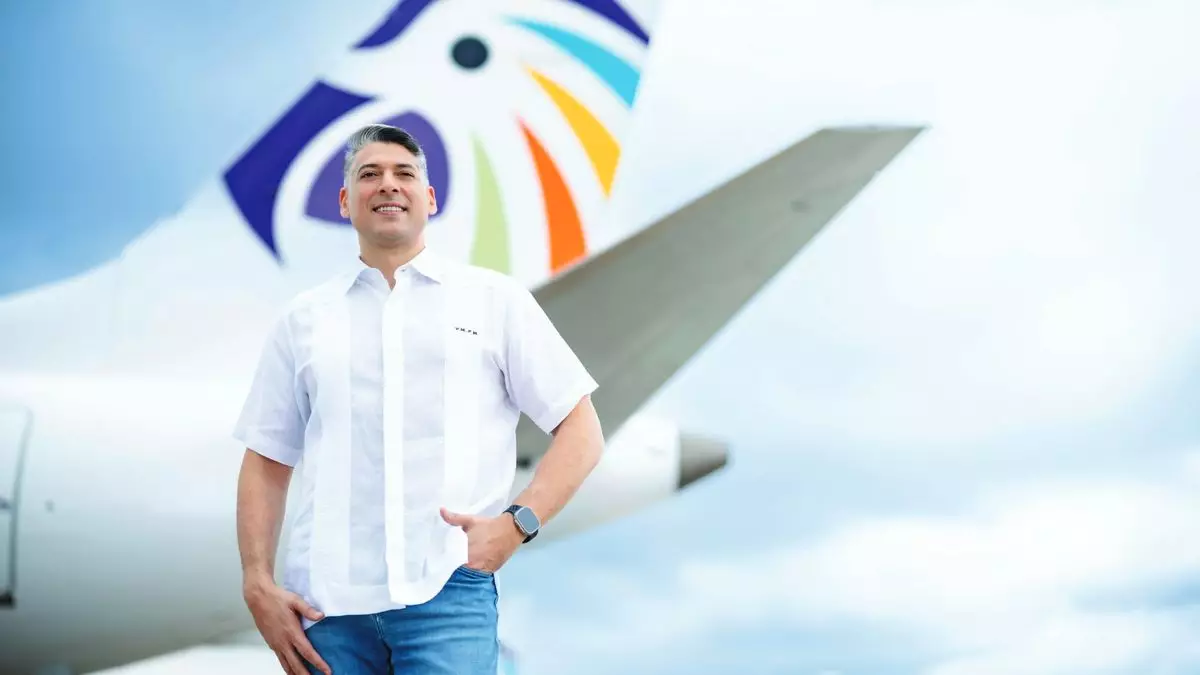Arajet, an ultralow-cost carrier based in the Dominican Republic, is poised to make significant strides in the U.S. aviation market following the signing of a newly minted Open Skies treaty. This agreement brings forth potential change that could transform how the airline operates, notably by easing restrictions and providing opportunities for establishing routes to major U.S. destinations. Victor Pacheco, the airline’s CEO, has shared an optimistic vision for the company to begin operations in key cities like Miami and New York, with hopes to commence service by Christmas. While he acknowledges the ambitious nature of this timeline, the excitement is palpable within the organization and reflects a tireless pursuit of growth.
The Open Skies treaty signed by the U.S. and the Dominican Republic on August 2 represents a milestone, marking the 136th such agreement for the U.S. Upon its ratification by the Dominican Congress and subsequent U.S. approval, this treaty promises to benefit airlines by removing limits on flight frequencies and destinations. This newfound flexibility allows airlines from both nations to broaden their reach, making it easier for companies like Arajet to create routes without the bureaucratic red tape that characterized the present regulatory framework. Previous restrictions on destination sharing demanded more effort, as airlines often had to seek special permissions to operate in certain markets.
For Arajet, whose current operational framework only permits limited access to the U.S. market, adopting its expanded service capabilities could be a game-changer. This development comes against a backdrop of competition dominated by American carriers, making entry into this market particularly strategic.
Since its launch in September 2022, Arajet has expanded impressively, serving 23 destinations in 16 countries with a fleet of 10 Boeing 737 Max 8 aircraft. Its network includes a variety of locations throughout the Americas; however, a gap remains in the U.S. market, where it faces stiff competition. Presently, two other Dominican airlines service the U.S. market—but they are dwarfed by the sheer scale of American Airlines and its competitors, which dominate overall market share.
Arajet aims to change this narrative by targeting three distinct market segments once it establishes its U.S. presence. Firstly, it looks to cater to Dominican expatriates visiting friends and family, a crucial demographic that represents a substantial market. Beyond that, the airline seeks to draw connections for leisure travelers between the U.S. and South America through its hubs in Santo Domingo and Punta Cana, creating a nexus that could serve multiple nations across the continent.
The competitive landscape is crowded, ridden with established carriers like JetBlue, American Airlines, Delta, and United, who collectively command a significant volume of seats in the market. JetBlue, for instance, has a staggering market share, providing over 241,000 seats in a single month. Against such giants, Arajet needs to leverage its unique selling propositions effectively. CEO Pacheco has indicated that low fares, reliable service, and enhanced passenger comfort are cornerstones of Arajet’s strategy.
Unlike other ultralow-cost carriers, Arajet offers reclining seatbacks and in-seat power—features that provide an edge in passenger experience. Yet, it maintains competitive seating configurations similar to carriers like Frontier and Spirit. This difference could be vital in attracting travelers weary of cramped flights typically associated with budget airlines.
Looking ahead, Arajet is not just focusing on operational elements but also strategizing its platform to maximize market penetration. As it prepares for its inaugural Global Distribution System (GDS) allocation—expected to roll out in November—the specifics of its GDS partner remain a closely guarded secret. Such distribution capabilities will certainly facilitate ticket purchasing for travel agents and customers alike, marking a significant step in Arajet’s integration into the larger airline ecosystem.
Moreover, as it eyes competition with regional heavyweights like Copa Airlines and Avianca, Arajet’s success hinges on identifying and exploiting market inefficiencies while offering attractive propositions to travelers yearning for affordable yet comfortable air travel options.
Arajet stands at a transformative juncture: armed with the potential of an Open Skies agreement and a visionary leadership, it is well-positioned to carve out its niche in the competitive U.S. aviation market. However, realizing this ambition will require meticulous planning, a laser focus on customer experience, and strategic adaptability to resonate with the needs of a varied travel population.

